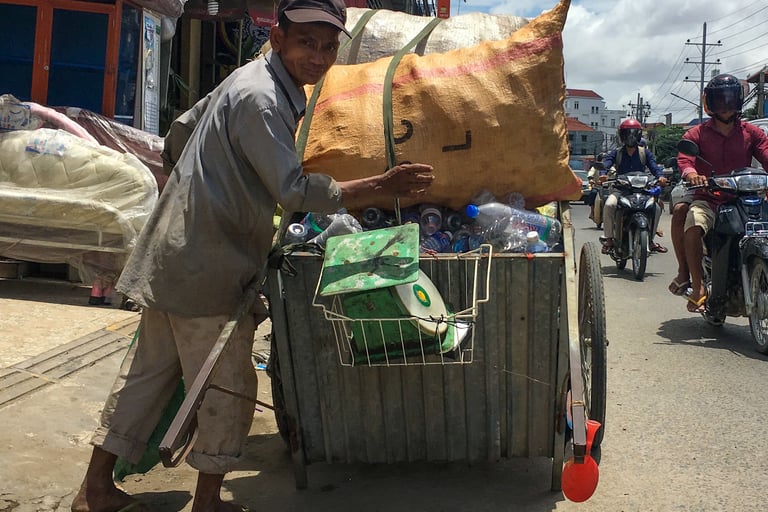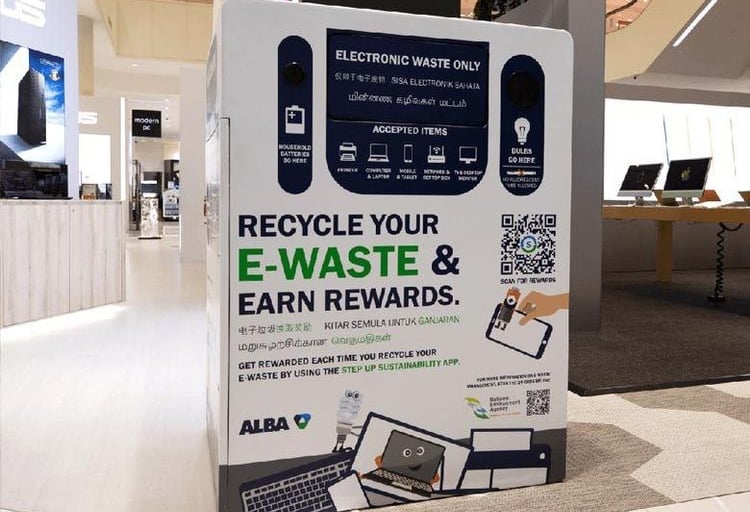E-Waste Collection Planning in Singapore and Cambodia
11/7/20232 min read


Background:
Cambodia
Sothun (2012) highlighted the lack of coherent policy, law, and regulation on e-waste management, and the significance of informal e-waste management practices such as scavengers collecting e-waste from local and official sources and distributing them to repair facilities and junk shops. After reusable components are salvaged, the remainder is incinerated or deposited in landfills (Phnom Penh Post 2017). Today, collection efforts include the provision of bins at high-traffic areas such as petrol stations, supermarkets and some residential districts for collection by government authorities (Khmer Times 2023), as well as a joint collection and disposal partnership with a private company which will focus on Phnom Penh until 2024 (Phnom Penh Post 2023).
Singapore
In 2021, Singapore formalized a regulated system for the management of e-waste governed by the Extended Producer Responsibility approach, by which producers bear the costs of collecting and treating their end-of-life products (NEA1, NEA2). The National Environment Agency (“NEA”) also entered into a 5-year exclusive contract with a private corporation for the collection and treatment and/or disposal of e-waste (NEA2). At present, the modes of e-waste collection include fixed collection points (with locations available at the NEA website), quarterly collection drives, and doorstep collection for a fee (NEA2). Singapore had also passed its first law governing “the collection and treatment of electrical and electronic waste and food waste”, the Resource Sustainability Act 2019 (2020 Rev Ed), in 2019.
Policy Recommendations:
In both countries, to promote public awareness and cooperation, it could be useful to explore investment into public education and outreach. In the case of Cambodia, to encourage easier collection of e-waste in terms of convenience, it could be helpful to look into the provision of more collection bins. Informal scavengers and collectors could also be incentivized to cooperate with and support centralized collection efforts.
(299 words)
References:
Khmer Times. (2023). ‘7 tonnes of e-waste collected’. 15 February 2023. https://www.khmertimeskh.com/501238891/7-tonnes-of-e-waste-collected/
National Environment Agency of Singapore (“NEA”) (NEA1). ‘E-Waste Management’. https://www.nea.gov.sg/our-services/waste-management/3r-programmes-and-resources/e-waste-management#:~:text=NEA%20introduced%20a%20regulated%20e,the%20environment%20and%20our%20health
NEA2. ‘Extended Producer Responsibility (EPR) System for E-waste Management System’. https://www.nea.gov.sg/our-services/waste-management/3r-programmes-and-resources/e-waste-management/extended-producer-responsibility-(epr)-system-for-e-waste-management-system
Phnom Penh Post. (2017). ‘E-waste' increasing, report says.'’ 19 January 2017. Gale OneFile: News, link.gale.com/apps/doc/A478114723/STND?u=ull_ttda&sid=summon&xid=cb90337c
Phnom Penh Post. (2023). ‘Ecobatt, environment ministry tackle e-waste’. 26 October 2023. 3, p. NA. Gale OneFile: News, link.gale.com/apps/doc/A770469191/STND?u=ull_ttda&sid=summon&xid=8d016f6e
Sothun, C. (2012). ‘Situation of e-waste management in Cambodia’. Procedia Environmental Sciences 16 ( 2012 ) 535 – 544. doi: 10.1016/j.proenv.2012.10.074
Images: https://www.eco-business.com/news/defusing-southeast-asias-e-waste-time-bomb/; https://recyclopedia.sg/resources/3-in-1-e-waste-bins


Waste picker in Phnom Penh. (Image: Eco-Business)


E-waste collection bin, Singapore. (Image: Recyclopedia.sg)